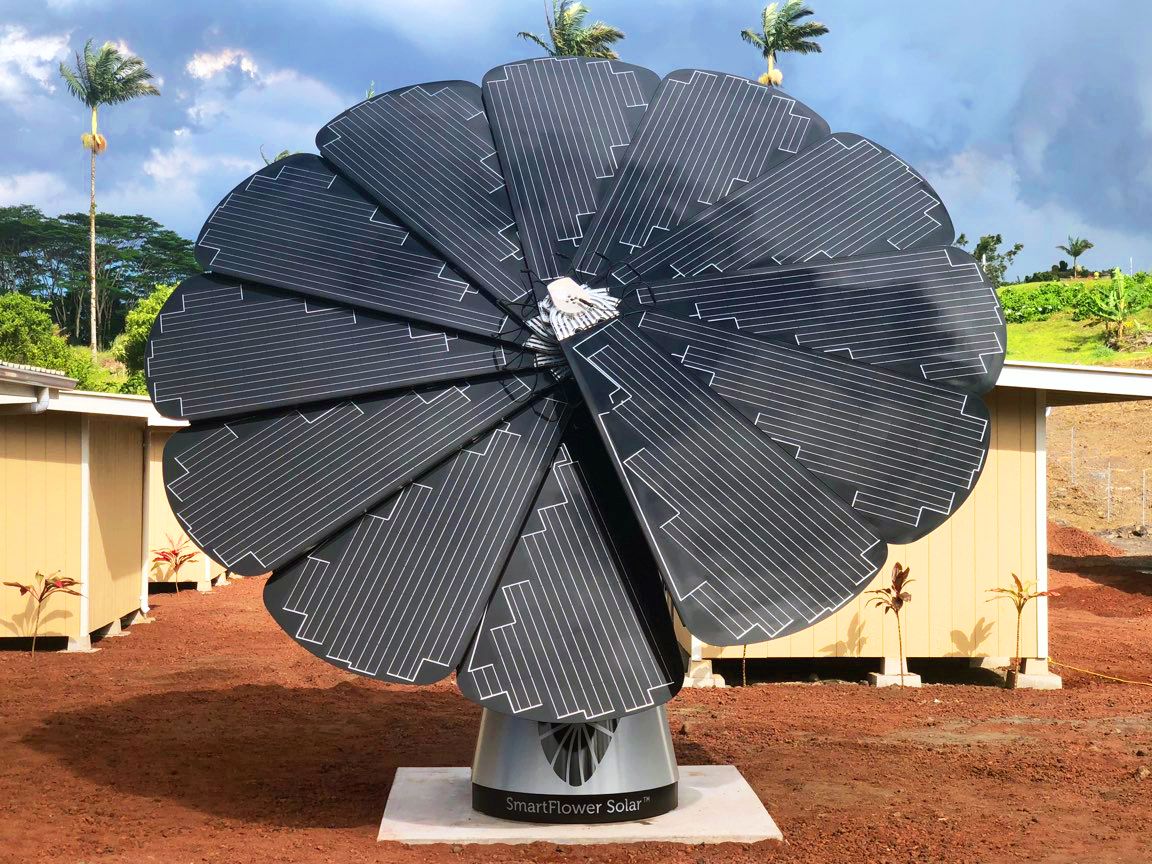
Homes of the future will increasingly be built with sustainability in mind; California will require solar panels on all new homes by 2020. But exactly what that solar power might look like may surprise you.
The bulky tack-on solar panels will be something of the past, and companies like Tesla, Sistine Solar, and Forward Labs are introducing sleeker, low-profile designs that cleverly blend into, if not actually serve as, the roofing of the house.
One of the most interesting designs we’ve been following is the SmartFlower. Originally an Austrian company but now based in Boston, Massachusetts, the SmartFlower is a portable, adjustable petal system that tracks the sun’s path throughout the day.
When the sun rises in the morning, the SmartFlower automatically unfolds and begins producing energy by setting its petals at a ninety-degree angle. The flower goes “back to sleep” into a folding position at night or whenever high winds make it unsafe to operate.
It does all of this autonomously through GPS-based dual axis tracking. It also boasts a cooling and cleaning system that brushes the back of each panel every time the unit folds and unfolds. Because the SmartFlower is always at an optimal angle to the sun, it can generate 40 percent more energy production than traditional solar.
The SmartFlower is a kinetic all-in-one system, with the inverter, monitor, and batteries housed in the cabinet of the unit. This means that the solar system can be delivered, assembled, and installed in just a few hours. Even better, the SmartFlower can be installed in any open space and you can draw power off of it just by plugging in.
The original SmartFlower base model is a fully integrated photovoltaic system meant for residential use that comes in eight different colors. The SmartFlower is also electric vehicle-compatible thanks to easy integration with external EV charging stations. A larger model—the SmartFlower Plus—offers an integrated battery storage system that lets you store solar energy for when you need it.
Years ago the SmartFlower was just a design that looked cool. Now it’s been installed throughout the U.S. in a handful of houses, as well at the Detroit Zoo, Virginia Wesleyan University, and Mary Baldwin University.
